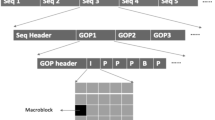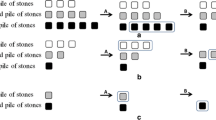Abstract
This paper tackles the optimization of applications in multi-provider hybrid cloud scenarios from an economic point of view. In these scenarios the great majority of solutions offer the automatic allocation of resources on different cloud providers based on their current prices. However our approach is intended to introduce a novel solution by making maximum use of divide and rule. This paper describes a methodology to create cost aware cloud applications that can be broken down into the three most important components in cloud infrastructures: computation, network and storage. A real videoconference system has been modified in order to evaluate this idea with both theoretical and empirical experiments. This system has become a widely used tool in several national and European projects for e-learning and collaboration purposes.




Similar content being viewed by others
References
Armbrust M, Fox A, Griffith R et al (2009) Above the clouds: a berkeley view of cloud computing. EECS Department, University of California, Berkeley
Barra E, Mendo A, Tapiador A et al (2011) Integral solution for web conferencing event management. In: IADIS int. conf. e-Society
Cerviño J, Escribano F, Rodríguez P et al (2011) Videoconference capacity leasing on hybrid clouds. In: IEEE CLOUD
Cerviño J, Rodríguez P, Trajkovska I et al (2011) Testing a Cloud provider network for hybrid P2P and Cloud streaming architectures. In: IEEE CLOUD
den Bossche RV, Vanmechelen K, Broeckhove J (2010) Cost-optimal scheduling in hybrid iaas clouds for deadline constrained workloads. IEEE CLOUD, pp 228–235
Goyal P (2010) Enterprise usability of Cloud computing environments: issues and challenges. IEEE Enabling Technologies, pp 54–59
Hajjat M, Sun X, wei Eric Sung Y et al (2010) Cloudward bound: planning for beneficial migration of enterprise applications to the cloud. In: SIGCOMM
Leavitt N (2009) Is cloud computing really ready for prime time? Growth 27:5
Li A, Yang X, Kandula S et al (2010) CloudCmp: comparing public cloud providers. In: IMC. ACM, pp 1–14
Li H, Zhong L, Liu J, Li B, Xu K (2011) Cost-effective partial migration of VoD services to content Clouds. IEEE CLOUD, pp 203–210
Li J, Chinneck J, Woodside M et al (2009) Performance model driven QoS guarantees and optimization in clouds. In: ICSE workshop, CLOUD 2009, pp 15–22
Li J, Guo R, Zhang X (2010) Study on service-oriented Cloud conferencing. In: IEEE ICCSIT, vol 6, pp 21–25
Song B, Hassan M, Huh EN et al (2009) A hybrid algorithm for partner selection in market oriented Cloud computing. In: MASS
Sotomayor B, Montero R, Llorente I et al (2009) Virtual infrastructure management in private and hybrid clouds. IEEE Internet Comput 13(5):14–22
Acknowledgements
We gratefully acknowledge the work of our main Conference Manager tester, Abel Carril, in addition to our anonymous reviewers for their insightful and detailed comments. Development of Conference Manager was partially supported by the EU research project named Global Plaza.
Author information
Authors and Affiliations
Corresponding author
Rights and permissions
About this article
Cite this article
Cerviño, J., Rodríguez, P., Trajkovska, I. et al. A Cost-Effective Methodology Applied to Videoconference Services over Hybrid Clouds. Mobile Netw Appl 18, 103–109 (2013). https://doi.org/10.1007/s11036-012-0380-4
Published:
Issue Date:
DOI: https://doi.org/10.1007/s11036-012-0380-4




